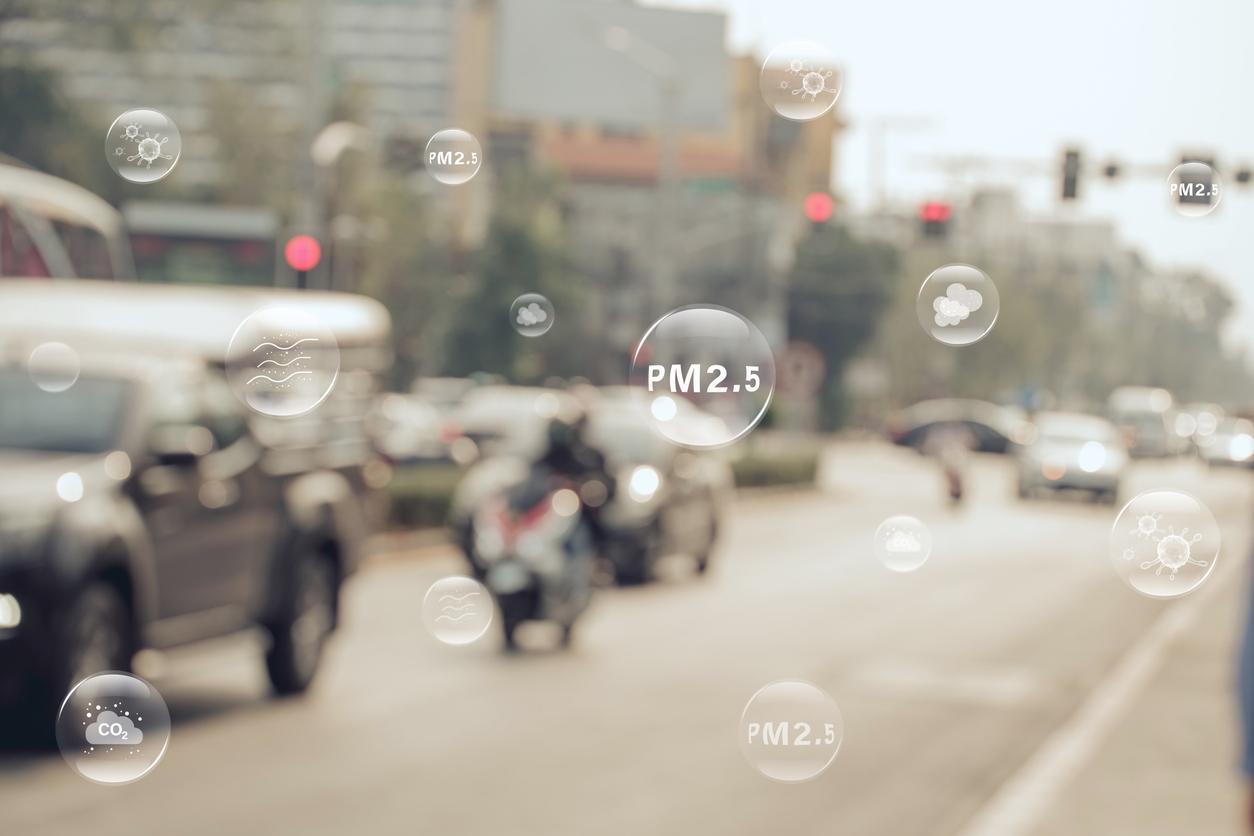Higher levels of exposure to PM2.5 and NO2 have been linked to an increased risk of Parkinson’s disease, in a new study from the world’s largest neurological disease research and treatment institute.

- Parkinson’s disease is a slowly progressing neurodegenerative disease characterized by the progressive loss of neurons in the brain.
- According to a new American study, air pollution, and more specifically exposure to PM2.5 and nitrogen dioxide, could increase the risk of developing this pathology.
- “These results suggest that reducing air pollution may reduce the risk of PD, modify the PD phenotype, and reduce the risk of dyskinesia,” the authors conclude.
Parkinson’s disease is a neurodegenerative disease that progresses slowly and is characterized in particular by the progressive loss of neurons in the brain. It mainly affects people aged 60 and over and its prevalence increases with age. In 2020, nearly 26,000 new cases were diagnosed in France according to Public Health Francebut several data suggest that the number of sick people should increase in the future, as This 2018 study conducted in the United States in which researchers project a doubling of the number of cases of Parkinson’s disease without dementia and a tripling of cases with dementia by 2060 in the country. While the aging of the population is one of the explanations, it is not the only one to take into consideration. As such, a new study, published on September 16, 2024 in the Journal of the American Medical Associationhighlights the role of air pollution in the risk and progression of this pathology.
Parkinson’s: exposure to PM2.5 and NO2 associated with greater risks
To conduct this study, researchers from the Barrow Neurological Institute in Phoenix, USA, analyzed data from 346 patients with Parkinson’s disease and 4,813 matched controls participating in the Rochester Epidemiology Project (from 1998 to 2015).
They then found that higher exposure to PM2.5 (particles with a diameter of less than 2.5 μm) was associated with an increased risk of this pathology, with a higher risk for populations living in metropolitan centers for the highest quintile of PM2.5 exposure compared to the lowest quintile. The risk was also increased for those more highly exposed to nitrogen dioxide (NO2).
Reducing air pollution to reduce the risk of Parkinson’s disease?
Scientists have made another discovery: “higher levels of PM2.5 exposure were associated with an increased risk of developing PD [maladie de Parkinson, ndlr] rigid akinetic and dyskinesia compared to PD patients exposed to lower levels”, the report details.
For the patient, the main characteristics of akinetic rigid Parkinson’s disease are: small, slow movements (bradykinesia), rigidity and tremors. Dyskinesias are characterized by involuntary, abnormal and often jerky movements made by the patient.
“These results suggest that reducing air pollution may reduce the risk of PD, modify the PD phenotype, and reduce the risk of dyskinesia.”, the authors conclude.



















